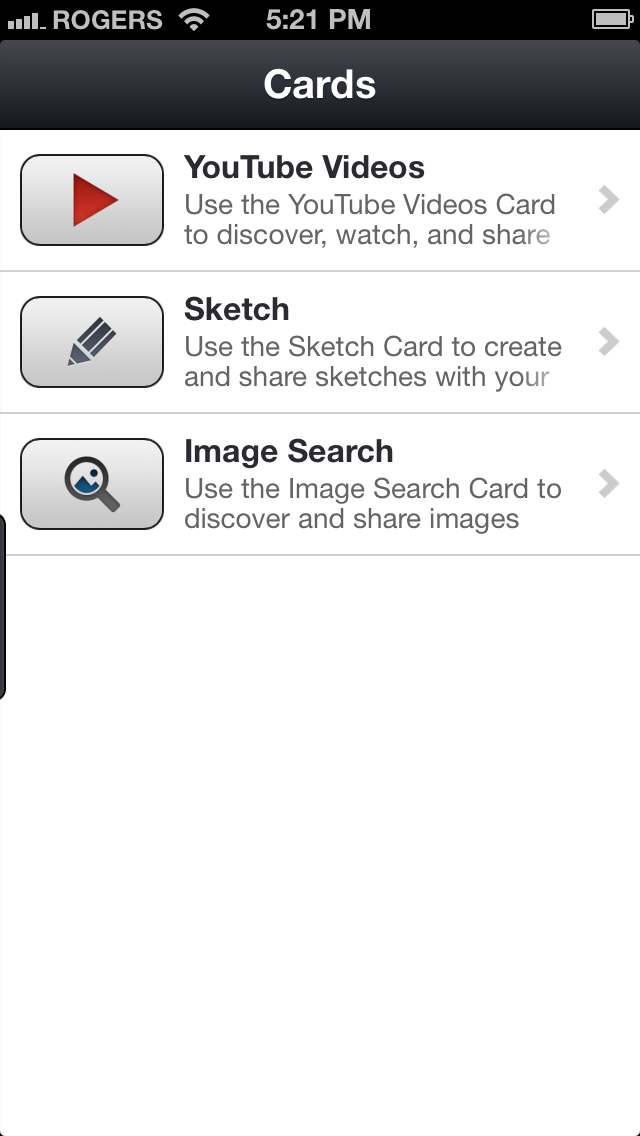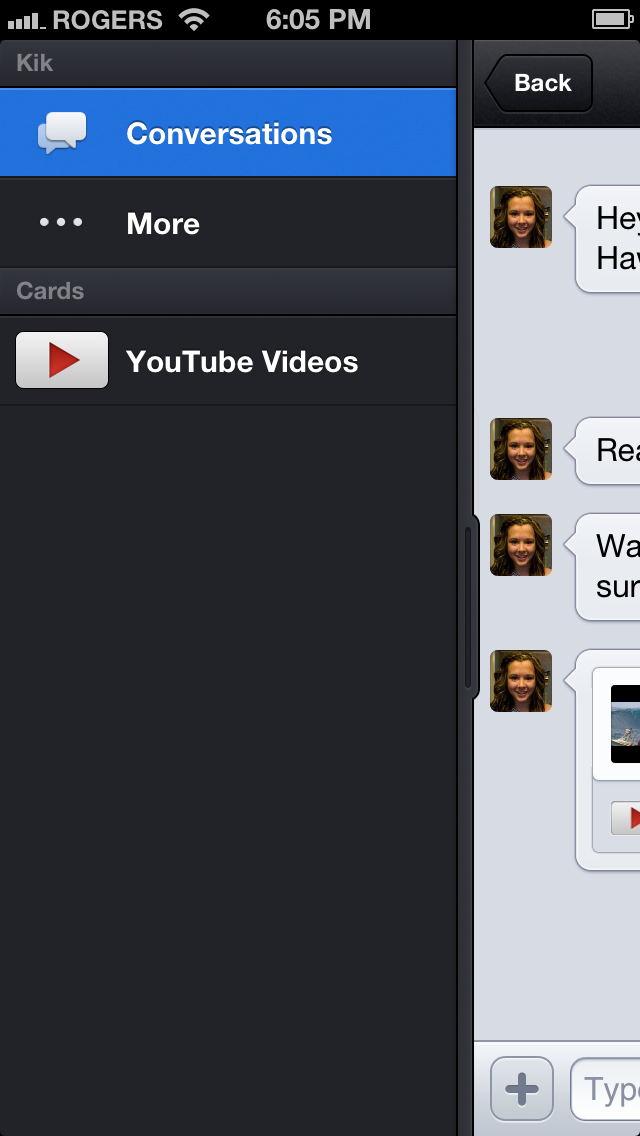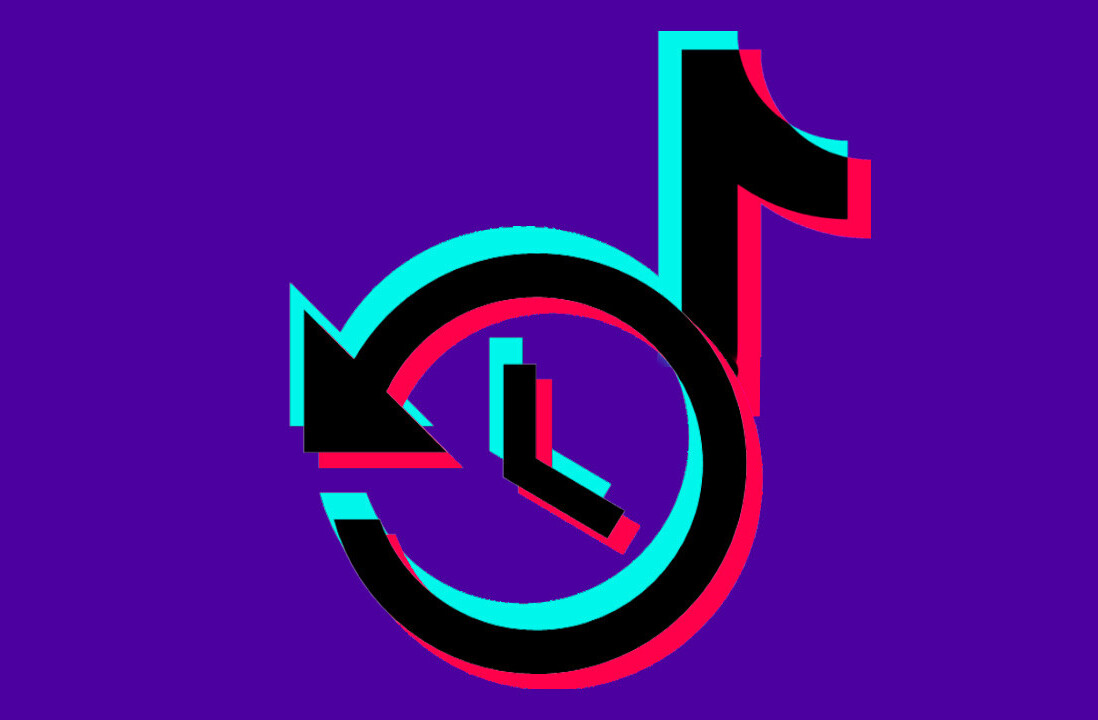
Kik, the popular mobile cross-platform mobile chat app, has celebrated passing 30 million downloads with the introduction of a subtle new feature that brings multimedia sharing to conversations, and may see the two-year-old service begin to generate revenue in the near future.
‘Kik Cards’ are a series of Web-based features that allow users to easily pull up content which can be embedded into conversations – essentially it allows multimedia sharing without the need to fire up a browser, and copy and paste links. Initially, just three types of Cards are supported — YouTube videos, images (via Bing) and DrawSomething-like Sketch — but founder Ted Livingston tells TNW that there are plans for hundreds more.
Users want multimedia content
The service has very deliberately remained simple — “SMS still exists, we are just faster, cleaner and simpler” Livingston explains — but the move to introduce multimedia content comes in response to feedback that users have provided.
Maps, restaurant guides and movies are among the Cards that he specifically mentions as possibilities for the future but, since they are entirely Web-based — built using HTML5 — new Cards can be easily created, and that could open Kik up to exciting new features such as voice calling, and brands – aka money.
As yet, Kik, which has raised $8 million in funding, has been solely focused on building both the product and user traction, rather than bringing in cash. That appears to be reaping non-monetary dividends and, aside from hitting 30 million downloads, it is signing up 100,000 new users per day.
That focus on product over revenues make a lot of sense given the personal nature of messaging and the lack of space on a mobile screen. Experimenting can upset users, but Livingston believes that you “can’t monetize pure messenger services” — without resorting to ads — and that comment speaks volumes about the importance of Kik Cards.
Keeping it simple
Livingston founded Kik in October 2010, and he admits that he has watched new entrants in Asia — like Line (75 million users), WeChat (200 million users) and Kakao Talk (65 million users) — add voice and video support, and monetize their services through gaming, shared apps, paid-for stickers and more. Still, he believes that this ‘bolt-on’ approach and never-ending feature sets will not work in the US and Europe, Kik’s core markets.
“The ‘put as many features in the app as possible’ approach isn’t going to work in the West,” he says. “Western users want a clean and simple experience, while we think that they like features but the core experience must be simple.”
That’s very much the mantra that the Kik has taken with Cards and you’d be forgiven for not initially noticing the slim bar on the left side of the screen which, when slid right, opens the feature. That, again, is entirely deliberate, Livingston says.
“We asked ourselves: ‘How do we add new features without actually adding any features?’,” he explains. A canned statement in the launch announcement succinctly explains that “Kik Cards allow users to add the features they want, without hurting the simplicity they love.”
Making money from messaging
While the press release announcing the new addition contains no mention of monetization, Livingston admits that Cards is very much a move to bring in money.
“Users don’t want ads,” he says, “and premium features are so shortsighted, users will think: ‘Hey Kik, why isn’t this free?’. Cards is just started and it could work with brands, for sure.”
Rather than open the platform up to developers and third parties, as Asian messaging firms have done with in-service app channels and gaming centers, Kik will retain control of what content is put into Cards. The HTML5 base makes new Cards easy to create, so users can expect to see a range of multimedia options coming to the service in due course.
Livingston doesn’t specifically explain how Cards could be monetized, but it is clearly an aim for the future that will likely come when the company has a large amount of content within the feature. For now, he stresses that the marketing side of things, which is so often a costly operation, has all come for the princely sum of zero dollars. That takes some pressure away from the need to make money, and it is also in contrast to Asian players, many of which use TV spots and offline advertising.
Focus on Western markets
Right now, Livingston says that two-thirds of Kik’s user base is on iOS and that very much reflects its popularity in North America . “We would like to focus on Asia, Africa and other emerging markets,” he says, before noting the expectations and cultural differences are challenging.
Livingston is a former RIM intern, which seems almost like a right of passage for any tech-minded Canadian, but he is non-committal on whether Kik will be built for the upcoming BlackBerry 10 devices. RIM’s BlackBerry Messaging service will get voice calling soon, which give it a sharper edge on the competition, but Kik has a long history with the company — having seen support pulled and reinstated, not to mention a 2010 lawsuit— and today the app is not endorsed or approved by RIM.
More screenshots behind the video above — shot by Livingston himself — are below. You can grab the feature, which is included in the latest version of Kik, at the link below.
Related: How text messaging as we know it will die in 3-5 years
Headline image via Mooinblack / Shutterstock
Disclosure: This article contains an affiliate link. While we only ever write about products we think deserve to be on the pages of our site, The Next Web may earn a small commission if you click through and buy the product in question. For more information, please see our Terms of Service.
Get the TNW newsletter
Get the most important tech news in your inbox each week.















